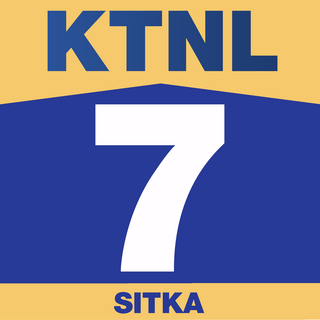Communications in Hong Kong includes a wide-ranging and sophisticated network of radio, television, telephone, Internet, and related online services, reflecting Hong Kong's thriving commerce and international importance.
Telecommunications in Jamaica include the fixed and mobile telephone networks, radio, television, and the Internet.

Telecommunications infrastructure in South Africa provides modern and efficient service to urban areas, including cellular and internet services. The Independent Communications Authority of South Africa (ICASA) is the watchdog of the telecommunications in the country.
Telecommunications in Uruguay includes radio, television, telephones, and the Internet.

Internet access is a facility or service that provides connectivity for a computer, a computer network, or other network device to the Internet, and for individuals or organizations to access or use applications such as email and the World Wide Web. Internet access is offered for sale by an international hierarchy of Internet service providers (ISPs) using various networking technologies. At the retail level, many organizations, including municipal entities, also provide cost-free access to the general public.
Vidéotron is a Canadian integrated telecommunications company active in cable television, interactive multimedia development, video on demand, cable telephony, wireless communication and Internet access services. Owned by Quebecor, it primarily serves Quebec and Ottawa, as well as the Francophone communities of New Brunswick and some parts of Eastern Ontario. Its principal competitors are Bell Canada and Telus Communications.

In the field of telecommunications, the concept of triple play service refers to the provision of three essential services — high-speed broadband Internet access, television, and latency-sensitive telephone services — all delivered over a single broadband connection. This approach emphasizes the convergence of multiple services by a single supplier, aiming to enhance user convenience and streamline service delivery.

C Spire, formerly known as Cellular South, Inc., is a privately owned telecommunications company headquartered in Ridgeland, Mississippi. The company consists of three business divisions – C Spire Wireless, C Spire Home Fiber, and C Spire Business.
KTVA is a television station in Anchorage, Alaska, United States, affiliated with the digital multicast network Rewind TV. The station is owned by Denali Media Holdings, a subsidiary of local cable provider GCI. KTVA's transmitter is located in Spenard—covering the Anchorage bowl and much of the adjacent Matanuska-Susitna Valley.
Alaska Communications is a telecommunications corporation headquartered in Anchorage, Alaska. It was the first telecommunications provider in the state of Alaska to maintain a third-generation wireless network and the only provider in Alaska that owned fully incorporated infrastructure for the major telecommunications platforms; wireless communications, Internet networking, and local and long-distance phone service. Alaska Communications wireline operations include advanced data networks and an underwater fiber optic system. The Alaska Communications wireless operations included a statewide 3G CDMA network, and coverage extended from the North Slope to Southeast Alaska.

KTUU-TV is a television station in Anchorage, Alaska, United States, affiliated with NBC and CBS. It is owned by Gray Television alongside MyNetworkTV affiliate KAUU. The two stations share studios on East 40th Avenue in midtown Anchorage; KTUU-TV's transmitter is located in Knik, Alaska.
KAUU is a television station in Anchorage, Alaska, United States, affiliated with MyNetworkTV. It is owned by Gray Television alongside dual NBC/CBS affiliate KTUU-TV. The two stations share studios on East 40th Avenue in Anchorage; KAUU's transmitter is located in Knik, Alaska.

KTNL-TV is a television station in Sitka, Alaska, United States, affiliated with MeTV. The station is owned by Bridge Media Networks. KTNL-TV's transmitter is located in downtown Sitka; the station is programmed from studios in Anchorage.

KUBD is a television station in Ketchikan, Alaska, United States, affiliated with CBS. Owned by Gray Television, it is operated as a full-time satellite of Juneau-licensed KYEX-LD. KUBD's transmitter is located in downtown Ketchikan.

Fiber to the x or fiber in the loop is a generic term for any broadband network architecture using optical fiber to provide all or part of the local loop used for last mile telecommunications. As fiber optic cables are able to carry much more data than copper cables, especially over long distances, copper telephone networks built in the 20th century are being replaced by fiber.
KATH-LD, virtual channel 2, is a low-power NBC-affiliated television station licensed to both Juneau and Douglas, Alaska, United States. The station is owned by Gray Television. KATH-LD's transmitter is located in downtown Juneau.

The Internet in the United States grew out of the ARPANET, a network sponsored by the Advanced Research Projects Agency of the U.S. Department of Defense during the 1960s. The Internet in the United States in turn provided the foundation for the worldwide Internet of today.

KXLJ-LD, virtual and UHF digital channel 24, was a low-power CBS-affiliated television station that was licensed to Juneau, Alaska, United States. It was a full-time satellite of Sitka-licensed KTNL-TV which was owned by Denali Media Holdings. KXLJ-LD was a sister station to low-power NBC affiliate KATH-LD, licensed to both Juneau and Douglas. KXLJ-LD shared transmitter facilities with KATH-LD in downtown Juneau.
Alaska United Fiber Optic Cable System is a submarine fiber-optic cable owned by GCI that links Anchorage, several places in Southeast Alaska including Juneau, to Oregon and Washington State. Alaska United East (AU-East) is 3,751 kilometers long with landing points at Anchorage and Lena Point in Juneau, and at the shore of Puget Sound at Norma Beach near Picnic Point in Lynnwood, Washington; AU-West has landings at Seward and on the Pacific coast at Warrenton, Oregon. Both are OC-192 rated as of 2018. Additional overland segments (AU-North/NW) connect Anchorage to Fairbanks and Prudhoe Bay along the Alaska Pipeline corridor and Parks Highway.
Optimum is an American telecommunications brand owned and operated by Altice USA. It is the fourth largest cable provider in the United States and a Fortune 500 company. Optimum offers Internet, television, mobile and home phone serving in Arizona, Arkansas, California, Connecticut, Idaho, Kentucky, Louisiana, Mississippi, Missouri, New Jersey, Long Island and New York, North Carolina, Ohio, Oklahoma, Pennsylvania, Texas, and West Virginia.








